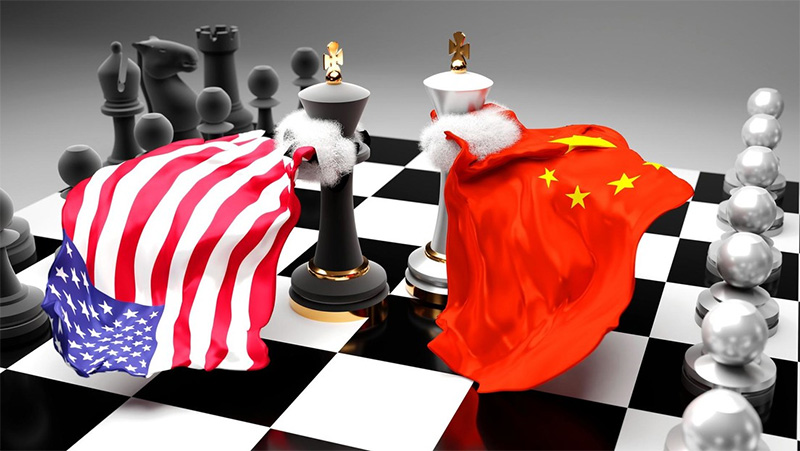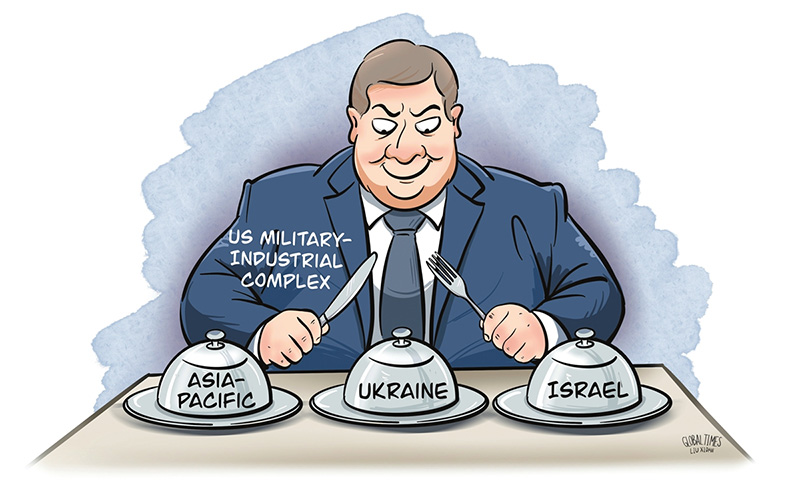 Pic.: Bloomberg
Pic.: Bloomberg
Island nations scattered across the Pacific Ocean are at the center of an intensifying competition between China and the US for maritime routes, deep-water ports and other strategic assets in what the Lowy Institute calls a new “Great Game,” writes Bloomberg.
The countries’ proximity to key shipping lanes and the communication cables that criss-cross the Pacific floor, together with fisheries and seabed minerals, also encourage the rivalry, Lowy said in a report on Wednesday. But it’s the region’s maritime location between Asia, North America and Australia that is set to keep it at the forefront of major powers’ defense strategies.
“The Pacific’s geopolitical landscape is increasingly crowded, with multiple powers vying for influence,” report authors Mihai Sora, Jessica Collins and Meg Keen said. “China is expanding its reach through diplomatic relations, infrastructure projects, and development finance, while traditional partners such as Australia and the US strive to maintain their influence.”
That’s a significant turnaround for island leaders who used to complain that western nations didn’t pay enough attention to the region. Lowy warns the new strategic focus is set to challenge good governance and transparency, given opportunities for local political actors to advance narrow interests over what best serves the people of the Pacific.
China is now a significant player in the Pacific via development finance, diplomatic outreach and infrastructure such as ports, airports and telecommunications. It’s also pushing to play a greater role in key sectors such as the military, policing, digital connectivity, and media, according to the report from the Sydney-based institute.
The US and its allies are also catching up. Since 2017, 18 new embassies have been established in the Pacific, including American outposts in Vanuatu and the Solomon Islands, while four have closed. Australia, which has opened six new Pacific posts since 2017, is the only country with a resident diplomatic presence in every sovereign Pacific nation.
“The frenetic tempo of global diplomatic outreach to the Pacific underscores the intensity of competition,” Lowy said. “But this sustained engagement can quickly overwhelm local systems” and may not bring “tangible benefits.”
In 2022, China signed a security pact with the Solomon Islands, triggering concerns among western nations. That prompted the US and Australia to bolster security and other agreements with countries including Papua New Guinea. Canberra also signed an agreement with Tuvalu allowing its people to relocate to Australia as climate change worsens.
One of the problems of great power attention in the Pacific is that local needs like poverty reduction, education, health and other key areas are ignored in favor of strategic projects like deep-water ports and communications infrastructure. Or locally, politicians use development funds to build stadiums and other high-profile projects at the expense of more pressing needs.
 Pic.: GT
Pic.: GT
As U.S. military-industrial complex continues fanning the flame, an unavoidable question arises: who will foot the bill for three wars? – ‘The Global Times’ puts a question.
The idea of "fighting on multiple fronts" is seldom good news for military strategists. History shows that countries attempting to engage on several fronts, or even just two, often face disastrous outcomes. Yet in the US, there are growing calls advocating for involvement in three concurrent wars.
The latest voice comes from Alex Karp, CEO of the data-mining software company Palantir, which is known for its work in defense and intelligence.
He warned that the US may have to wage war in three different theaters in the future - with China, Russia and Iran.
While suggesting Pentagon should continue developing autonomous weapons at full speed, he brought up an odd perspective.
"I think we're in an age when nuclear deterrent is actually less effective because the West is very unlikely to use anything like a nuclear bomb, whereas our adversaries might," because of "moral disparity," he said.
When saying the West is very unlikely to use a nuclear bomb, he might have forgotten that the US is the only country on Earth that has used nuclear bombs in wartime.
Speaking of moral disparity, among the five nuclear powers, China is the only country pursuing the policy of no-first-use of nuclear weapons.
The US, on the other hand, has been quite reluctant to even consider the initiative.
The pretense of "morality" is merely a smokescreen. The real driving force behind US' warmonger rhetoric is the military-industrial complex.
They push for conflict to boost their profits, increase arms sales, and fuel growth in related military industries. War is their business.
They couldn't care less about the outcomes of conflicts, as long as they can sell weapons. That's why they perpetuate a constant stream of threats theories for their greed.
In February, Time magazine reported that Palantir is among tech giants that "turned Ukraine into an AI war lab." It seems that Palantir isn't satisfied; it wants more wars to feed its larger appetite.
However, as US military-industrial complex continues fanning the flame, an unavoidable question arises: who will foot the bill for three wars?
For Washington, supporting Ukraine is already stretching resources thin. After the outbreak of the Israel-Palestine conflict, even artillery shells intended for Ukraine were redirected to Israel. Not to mention that the aid to Israel has only deepened the US' international reputation and moral dilemmas. With two fronts already in disarray, how can the US possibly manage a third front in the Pacific?
read more in our Telegram-channel https://t.me/The_International_Affairs

 11:10 25.08.2024 •
11:10 25.08.2024 •






















